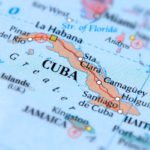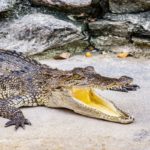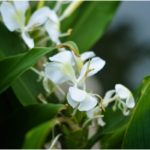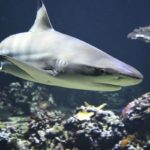Cuba has some seriously varied landscapes across the island which makes it the perfect home to so many different species.
It has a huge number of endemic species, meaning you can’t find them anywhere else other than in Cuba!

We’ll go through some of the most spectacular animals and wildlife you can find in Cuba, and find out about Cuba’s national animal.
Whilst over 20% of the island is protected, unfortunately, there are still many species that face extinction due to economic development, fishing, and human involvement.
However, Cuba still has an incredibly diverse and amazing amount of wildlife on offer and many species you won’t find anywhere else in the world!
What Is Cuba’s National Animal?
Cuban Hutia
Cuba’s national animal is the Cuban hutia! They are also called Desmarest’s Hutia as well.
This furry fella is a massive rodent that weighs up to 19 lb!
It is an omnivorous creature that lives in almost all of the diverse ecoregions of Cuba, being incredibly common across most areas.
It looks like a mix between a huge rat and a capybara, having a waddling gait as it moves, though a very fast jumper when need be.
It has thick, coarse brown fur across its entire body, including its tail.
Whilst they can be found pretty much all over the island, they have a large presence around the Guantanamo province, especially around Guantanamo Bay, and they also favor mangrove swamps.
When Francis Drake visited the island, he described them as ‘little beast-like cats’.
Cuban Trocororo
The national bird of Cuba is the Cuban Trogon or tocororo which is a native animal to Cuba.
With its incredibly diverse range of colored feathers, the tocororo is a beautiful bird that is around 11 inches from beak to tail.
It lives within the dry and humid forests of the island and can be seen regularly throughout the entire island as they are very common.
Its name also comes from the sound it makes when it chirps ‘toco-toco-toroco’.
The feathers of the tocororo are usually the colors of the Cuban flag, though they have rainbow accents as well.
They are also a symbol of Cuban national pride, as they can’t live in captivity- the bird will kill itself trying to escape rather than remain imprisoned.
It lives off flowers, fruits, nectar, and bugs.
Why Is There Such Diverse Wildlife In Cuba?
The reason for Cuba’s huge range of animal life is mainly due to the diversity of the land on the island.
As it is part of the Cuba-Cayman Islands Freshwater ecoregion, the narrow island of Cuba is a Caribbean island biodiversity hotspot and is a subtropical island that has six major areas of biodiversity.
These six areas are:
- Humid forests
- Mangrove forests
- Wetlands
- Pine forests
- Cactus scrub
- Dry forests
Because Cuba has all of these very different areas within it for animals to thrive, it is host to almost 14,000 different species of animals, with many thousands endemic to just Cuba, which makes it have far more species than any other island in the Caribbean.
5 Animals You Can Only Find In Cuba

There are so many animals that you can’t find anywhere else in the world apart from Cuba, so it’s tough to narrow it down to five!
Apart from the two national animals talked about above, here are 5 other animals that you won’t be able to see anywhere else on the planet!
Bee Hummingbird
Say hello to the smallest bird in the world! The bee hummingbird is endemic to Cuba and is a worldwide symbol of love.
It comes in at an average length of 2.3 inches, and weighs 0.8 ounces, around the same as a sugar cube!
Their eggs are the size of a coffee bean and they can live quite comfortably in a nest no bigger than a quarter!
Their name of course comes from their size, as they are only a fraction bigger than an average bumblebee.
This small size is of course a downside when it comes to predators who love to snack on these birds such as wasps, frogs, mongooses, and spiders.
Their tiny hearts beat at 80 beats per second, and during mating season, this can double to 160 beats per second.
The energy they use is so precious, as they beat their hearts and wings so fast, that they need to eat the nectar of approximately 1500 flowers every single day to survive.
Cuban Boa
The Cuban boa is an endangered snake found in the tropical dry forests of Cuba.
Endemic to the island, it is also the largest in Cuba growing as big as 6 meters in length.
The Cuban boa is not poisonous; there are no poisonous snakes on the island at all.
The Cuban boa does however use its massive body to trap and suffocate its prey. It is one of the larger species of boa on the planet.
They have pretty poor eyesight, relying on their tongues to smell the air.
The Cuban boa feeds on small rodents and other mammals, and are carnivores.
They do not kill their prey with their fangs, rather they use them to hold prey in place whilst suffocating them with their bodies.
Cuban Evening Bat
This little bat is another one that is endemic to the island. It is the smallest bat in the vesper family and eats insects to survive.
These tiny bats play a huge role in pest control on the island and there are a lot of conservation efforts to protect the many species of bats in Cuba as they are essential to the rest of the ecosystem.
Cuban Crocodile
This is unfortunately another endemic species that face extinction, with only 3000 left in the wild.
These small to medium crocodiles have a typical size of 2 meters (6.9 feet) and can only be found in two swamps- Cuba’s Zapata and Lanier swamps.
The Cuban crocodile has been hunted for its skins for many years, and this once abundant and important part of the ecosystem is now facing the serious threat of extinction.
These crocs are known to hunt in packs and are considered the most intelligent crocodilian species.
There have been several programs in place to reduce poaching.
They are incredibly aggressive crocodiles considering their modest size in terms of other crocodiles of the species.
They are a special interest to biologists because of the way they hunt and cohabit.
Biajaca
This weird and wonderful-looking fish can only be found in the rivers and outlets of Cuba.
Due to the Tilapia becoming more prominent in the waters so that Cubans can farm and eat them, their numbers have declined, though they are still a common fish in the area.
They are grey and are spotted with dark blue and olive green markings over their bodies, and they can range between 30-45 cm in length.
Final Thoughts
There are so many other animals to explore across the Cuban shores, coastline, and interior, and this incredibly diverse landscape is the reason why there are so many UNESCO world heritage sites throughout the island.
There are many protected species and tourist-dependent animals on the island, which will hopefully keep many of these animals and their habitats protected for a long time.
- What Is The Largest Island In Cuba? - September 19, 2022
- Havana – Why Is It Cuba’s Most Exciting City? - September 19, 2022
- Cheapest Time To Visit Cuba (Ultimate Guide) - September 19, 2022








